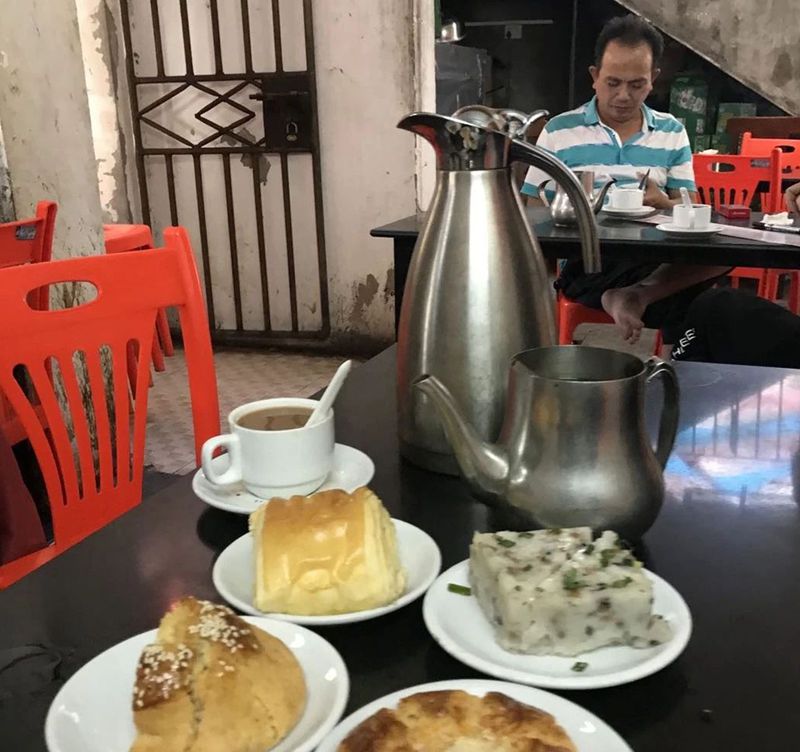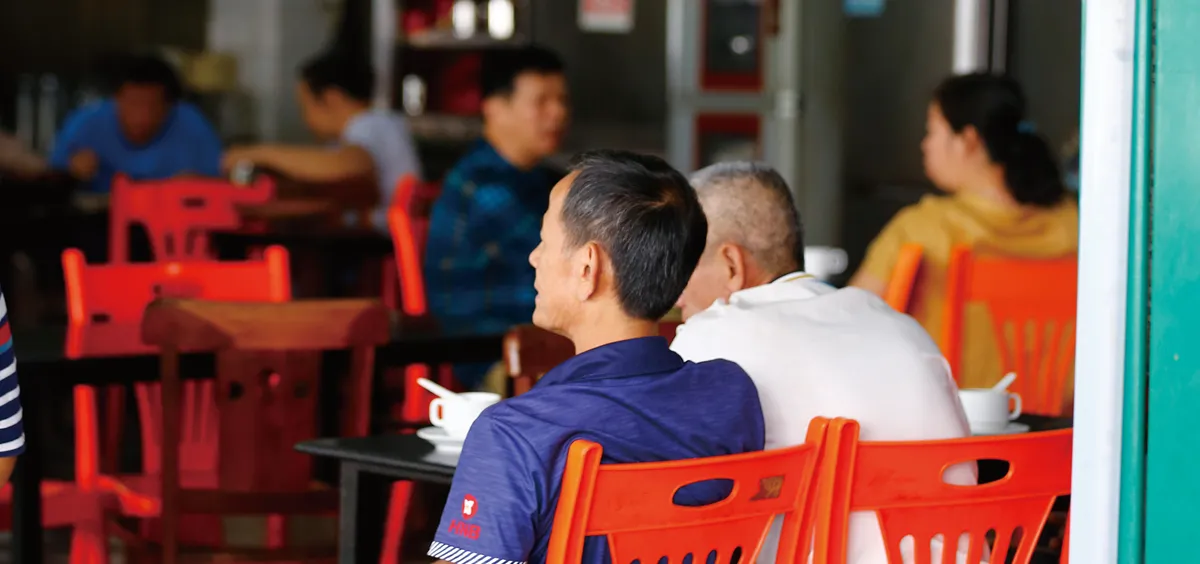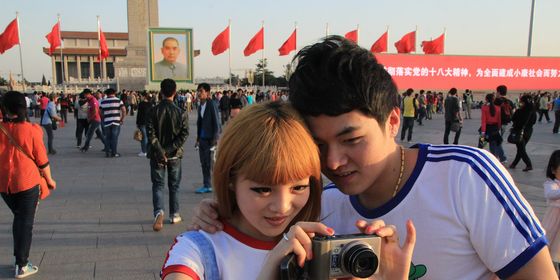A sip of sunshine on a southern isle—an excerpt taken from TWOC’s new guide Hainan: Jade Cliffs to Ocean Paradise
At 3 p.m. old city districts across Hainan spring to languorous life. With a squeak of rusty gates, shops reopen after their owners’ post-lunch siestas, and open-toe sandals scrape the sidewalks as old men shuffle up to their neighbors in the street, asking “Wu jia dei bo (Go have tea)?”
Laobacha (老爸茶), literally “old dad tea,” is a widespread institution usually found in the most weathered neighborhoods of Hainanese cities and towns—where graceful turn-of-century arcades have mushroomed into mid-century apartments, now tottering on the edge of redevelopment. Wicker or plastic tables and chairs spill onto the sidewalk from shops that are spartan to the point of dilapidation. They are quickly claimed by middle-aged and elderly regulars, who measure their teatime by the hour.
Despite its aged trappings, Hainan’s public teahouse tradition isn’t very ancient. It’s believed to have been another import of Nanyang (“Southern Seas”), the name for the Southeast Asian regions where many Hainanese migrated during the 18th and 19th centuries. The modern practice, moreover, only revived on a large scale after the 1980s reform era, when locals once again had enough disposable income to spend on a whole day of leisure.
Laoba tea retains many traces of its eclectic past, adapting from the Nanyang regions both the indigenous flavors and the influences of their European colonizers. Baked brioche buns, with fillings such as custard or barbecue meat, are served as snacks alongside familiar staples of Cantonese dim sum: pan-fried dumplings, siu mai, chicken feet, and egg tarts. Pots of Chinese chrysanthemum and Tieguanyin (铁观音) tea are brewed along with less orthodox offerings, such as silky black tea with condensed milk, iced coconut milk, and coffee.

Don’t mistake this, though, for its stuffy Victorian ancestor, the high tea: “Casual” is the watchword at most Hainanese teahouses, with few batting an eye when patrons show up in sleeveless under-vests, draw their feet up onto the chairs, or guffaw loudly with their peers from the next table. “In the teahouse, the spirit cries out without restraint. Disheveled clothing is an escapist pleasure; loud clamoring is the extension of contentment,” author Zeng Hong wrote in the essay “Winding Thoughts of Hainan” in 2010. “Here, the commonplace is free to exist, laughing at the constraints of formality, despising the affectations of elegance.”
Laoba teahouses are most crowded in the afternoons, though they see a rush during the midmorning—serving languid breakfast-eaters who then sit and sip tea until lunch—and the evening, when patrons pop in for a drink, snack, or chat during their after-dinner walk. Prices on the menu rarely rise above the single digits, and the tea is always refilled by bustling servers before it has a chance to get cold, gradually weakening until the customer finally leaves (or orders a new pot to prolong their stay).
Inviting one’s neighbors or business partners to an afternoon of tea and conversation is a traditional and cheap way of reinforcing small-town social bonds in Hainan. It’s also common, though, to see elderly patrons sitting alone, reading the paper, or scribbling in it with a pencil as they try to work out the next day’s lottery numbers—an activity known in the local dialect as hao jiang, or “calculating the prizes.”
The quotidian contentment of the teahouse has enraptured many writers, including Liu Xiaolin, who wrote in 2009 in Yecheng magazine, “A pot of tea gathers together men and women, the old and young, sometimes making brilliant remarks on current events, sometimes exchanging banal gossip…the day passes in quiet elegance and fragrance, as if flowing in water.” Similarly, in her essay “Life Elsewhere,” Hainanese author Tan Shuqin wrote: “Sunlight pierces the room, and they gulp down the moments of the day with their tea. One cannot help but envy this divine existence.”
To sample the sybaritic joy of laoba tea for yourself, venture into the old sections of cities like Haikou, Wenchang, Sanya, or Qionghai, away from the touristic bustle, and pick out the crowds drinking tea by the sidewalk. One time-honored Haikou establishment is the Qiong Ming Hua Tea Shop (琼铭华茶店) in the old prefectural city district, where one can eat and drink the old-fashioned way amid grouty tiles, harassed waitstaff, and ever-flowing small talk. The Harbor Sea Restaurant (港海餐厅), adjacent to Haikou’s historic Qilou district, offers a more convenient location and a slightly updated setting with over 50 types of snacks, but retains the same welcoming vibe—where tea isn’t only a drink, but a meal, a habit, a social glue, and a way of life.
Excerpt taken from Hainan: Jade Cliffs to Ocean Paradise, TWOC’s new guide to China’s southernmost province. Get your copy today from our WeChat store!














